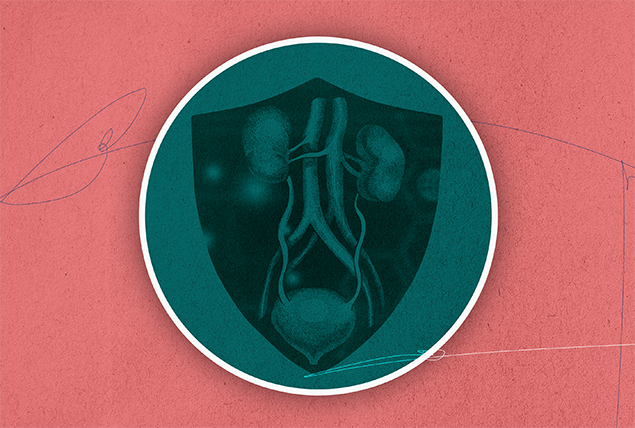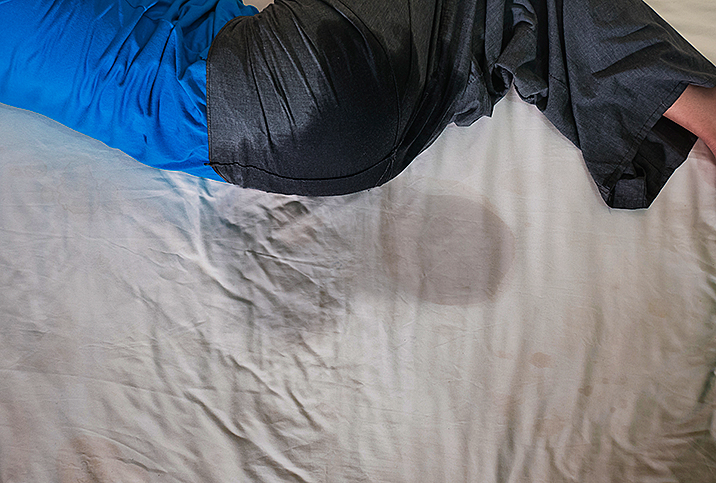What Causes Hypospadias and How Does It Affect Men?

When a baby boy is born, the doctor performs an examination to ensure everything is as it should be. Part of the exam is to verify the urethral opening is where it should be: at the tip of the penis. Sometimes, it isn't.
What is hypospadias?
Hypospadias is a congenital birth defect that occurs in about 1 in 200 baby boys. The primary symptom is that the opening of the urethra, the hole you urinate out of, doesn't form in the typical place at the end of the penis.
In most males, the urethra originates at the base of the bladder within the pelvis and runs through the length of the penis and ends at the tip. In boys born with hypospadias, however, the exit hole develops elsewhere.
Hypospadias frequently causes issues with urinating, often forcing the person to sit down to pee or risk spraying. They may have to deal with a divergent or split stream. If the hypospadias is considered severe enough to warrant surgical intervention, it's usually performed while the child is still in infancy.
While these surgeries are frequently successful and often lead to positive outcomes with no complications, they may need to be revisited.
The condition may cause complications with sexual function. For instance, it can affect the man's ability to father children and cause psychological issues that may contribute to erectile dysfunction (ED).
There are four broad types of hypospadias, defined by where the urethral opening develops.
Subcoronal
The corona is the projected flare or border that's formed by the base of the penis head. Subcoronal hypospadias is, therefore, when the urethral opening is below the head but still near where it typically forms.
Midshaft
Midshaft hypospadias is when the urethral opening appears somewhere lower down along the shaft of the penis.
Penoscrotal
This is a more difficult-to-treat type of hypospadias, which occurs when the urethra doesn't go through the penis at all, but instead opens up near where the penis and scrotum meet.
Perineal
In some cases, the scrotum may be abnormally divided, and the urethra appears somewhere along the midline of the divided sac on the perineum, the area between the testicles and anus.
"Where hypospadias gets complicated is the opening can be anywhere from almost on the top of the penis to all the way down below the testicles," said Amanda North, M.D., the director of urology at the Children's Hospital at Montefiore in the Bronx in New York City. "Obviously, if the opening is down by your testicles, that's a much more severe condition than if it's almost at like the tip of the penis, and you can pee standing up and not have any problems."
Hypospadias frequently presents along with a related condition where the penis is curved—especially noticeable when it's erect—called chordee or congenital penile curvature. Unlike another condition involving a curved penis called Peyronie's disease, chordee isn't caused by scar tissue and is not late-onset; it's present at birth.
"Not everyone with hypospadias has chordee, and you can have chordee without hypospadias," North said. "But it's part of the triad of findings that can make up hypospadias."
The other two components of the triad are the abnormal urethral opening described above and what's called a hooded foreskin. The latter is when the child is born with a foreskin on top of the penis but none on the bottom, so it looks like it's wearing a hoodie.
What causes hypospadias?
Hypospadias is a congenital condition, so there isn't necessarily a clear-cut line to one specific cause. There is a genetic component. Boys who have close relatives who have hypospadias, such as a father or brother, are more likely to have it, for instance.
There is substantial evidence to suggest that certain environmental factors may increase a mother's chances of giving birth to a boy with hypospadias. According to research from the Centers for Disease Control and Prevention (CDC), these include:
- Age and weight. Pregnant women older than 35 years old and who were obese during their pregnancy were significantly more likely to give birth to a boy with hypospadias.
- Treatment for fertility. Women who used assisted reproductive technology—such as in vitro fertilization—also had higher rates of hypospadias births.
- Hormone treatment. Women who were on progestin or certain other hormones while they were pregnant gave birth to babies with hypospadias more frequently.
- Pesticides. The research isn't yet considered solid, but as the rate of cases of hypospadias in developed Western nations continues to rise, more evidence is emerging that suggests exposure to certain pesticides and pollutants are contributing factors.
How is hypospadias diagnosed?
Diagnosing hypospadias is a relatively routine task. The standard examination of a newborn includes checking the genitals for any abnormalities, and among those is hypospadias. The doctor will examine the child to see where the urethral opening is and also check for certain associated conditions of the genitalia, such as the following:
- Undescended testicle. This is a relatively common condition among babies who are born with hypospadias, in which one of the testes doesn't complete the journey to drop down from the lower abdomen into the scrotum during development in the womb.
- Chordee. A congenital abnormal curvature of the penis, especially when erect, is called chordee. It is frequently associated with hypospadias.
- Undeveloped foreskin. People with hypospadias are frequently born with an incomplete or hooded foreskin.
- Abnormal urination. This is probably the most common symptom of hypospadias: spraying or a split urine stream.
Accommodations adults might have to make for hypospadias
Having hypospadias repair surgery as an infant isn't always the end of the story. While these surgeries are frequently successful and often lead to positive outcomes with no complications, they may need to be revisited.
Sometimes, scar tissue can alter the appearance or function of the penis, and sometimes new openings develop called fistulas that need to be repaired, among other secondary issues.
One study that reviewed more than 5,000 cases of boys who had undergone primary hypospadias surgery as infants found the rate of reoperation—needing at least one, if not more subsequent hypospadias-related surgeries—was significant, depending on the type of hypospadias. The rates at which they required more surgery or multiple additional surgeries were as follows:
- Distal hypospadias (opening near penis head): 12.6 percent
- Proximal hypospadias (opening down by the scrotum): 37.9 percent
- Perineal hypospadias (opening on the undeveloped scrotum or perineum): 46.6 percent
Even following multiple surgeries, these men may end up with a penis that curves in such a way it causes discomfort during sex or causes him insecurities and anxiety about his appearance.
One long-term study of adults with hypospadias found that dissatisfaction with the appearance of their genitals was relatively common, and it was correlated with low self-esteem and other psychiatric issues. Often, therapy can help with these self-doubts, and there are support groups specifically for men who live with hypospadias.
Another time adult men who were born with hypospadias may have to make accommodations as adults is while urinating. Sometimes, even after having a repair surgery, the person's urine stream is still a bit unconventional; this is even more common in men who haven't had repair surgery because the opening of their urethra was close enough to its typical place.
They may have to sit down to pee or develop other ways of controlling where their urine goes.
Conclusions
With modern surgical techniques, hypospadias repair has a positive success rate.
The support infrastructure around conditions such as hypospadias, including therapy and support groups, can help ensure men with the condition—one that is becoming more common—don't have to feel like they're alone.


















